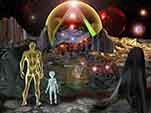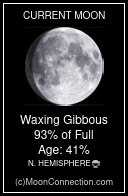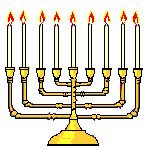WHO IS JANA JANUS?
The information Jana Janus puts up on the Forum is very well written and thought out.
Where else does Jana Janus post?
Military & National Security Forum TOC http://webm926e.ntx.net/military/
Is Jana Janus male or female? Or maybe both.... i.e. two people? One giving the information--one writing it.
Could Jana Janus be a code name for someone who really has the knowledge? The Internet is a great place for releasing gems of truth disquised as Reptile Reports.
A quick search of the web provide this interesting piece of information.
Jana Janus is: THE DEITY OF THE ONE WORLD!!!
(What a great cover!!!)
http://www.cs.utk.edu/~mclennan/BA/PT/M21.html#front
Motto: Unum mundum sum (I am the One World).
Deities: Jana/Janus; Hermaphroditus; Anu.
6+6 = Eternity + 6.New Order, Harmony, Wholeness, Reconciliation of Opposites, Androgyny (Water & Fire). -------------------------------------------------------------------------------- --------------------------------------------------------------------------------
Jana --------------------------------------------------------------------------------
A minor Roman goddess. She is the wife of the god Janus.
-------------------------------------------------------------------------------- --------------------------------------------------------------------------------
Janus --------------------------------------------------------------------------------
Janus is the Roman god of gates and doors (ianua), beginnings and endings, and hence represented with a double-faced head, each looking in opposite directions. He was worshipped at the beginning of the harvest time, planting, marriage, birth, and other types of beginnings, especially the beginnings of important events in a person's life. Janus also represents the transition between primitive life and civilization, between the countryside and the city, peace and war, and the growing-up of young people.
One tradition states that he came from Thessaly and that he was welcomed by Camese in Latium, where they shared a kingdom. They married and had several children, among which the river god Tiberinus (after whom the river Tiber is named). When his wife died, Janus became the sole ruler of Latium. He sheltered Saturn when he was fleeing from Jupiter. Janus, as the first king of Latium, brought the people a time of peace and welfare; the Golden Age. He introduced money, cultivation of the fields, and the laws. After his death he was deified and became the protector of Rome. When Romulus and his associates stole the Sabine Virgins, the Sabines attacked the city. The daughter of one of the guards on the Capitolian Hill betrayed her fellow countrymen and guided the enemy into the city. They attempted to climb the hill but Janus made a hot spring erupt from the ground, and the would-be attackers fled from the city. Ever since, the gates of his temple were kept open in times of war so the god would be ready to intervene when necessary. In times of peace the gates were closed.
His most famous sanctuary was a portal on the Forum Romanum through which the Roman legionaries went to war. He also had a temple on the Forum Olitorium, and in the first century another temple was built on the Forum of Nerva. This one had four portals, called Janus Quadrifons. When Rome became a republic, only one of the royal functions survived, namely that of rex sacrorum or rex sacrificulus. His priests regularly sacrificed to him. The month of January (the eleventh Roman month) is named after him.
Janus was represented with two faces, originally one face was bearded while the other was not (probably a symbol of the sun and the moon). Later both faces were bearded. In his right hand he holds a key. The double-faced head appears on many Roman coins, and around the 2nd century BC even with four faces.
Pronunciation {jayn'-uhs}
Janus ( none ) Roman god of passage, of doorways (januae), archways (jani), and ofbeginnings and endings. Also a god of the threshold between the old year and the new, in token of which he gave his name to the month of January. His jurisdiction included gates, harbours, travel, daybreak — things which had the sense of beginning or going out. Janus was said to be the son of Apollo and Creusa, although he had no Greek equivalent. His consort was Jana. He was the father of Tiberinus by Camasena, of Fontus by Juturna, and of Canens by Venilia. Janus was depicted either as two-faced (Bifrons) or four-faced (Quadrifons). His attributes included keys and a staff. The doors of his temple in Rome were kept locked in peacetime and thrown open in wartime. His festival was the Agonium, which was held on January 9. The beginning of the day, month, season and year were sacred to him.
JANUS WAS THE FIRST KING OF LATIUM
WHAT WAS/IS LATIUM?
Latium Territory: The region, with undulated hills, stretches from the western buttresses of the Apennines to the Tyrrhenian Sea. The landscape is varied and presents flatlands, on the coastline and in the hinterland, ridges and calcareous highlands. Latium has four very ancient volcanic districts, where the craters of extinct volcanoes now house the lakes of Bolsena, Vico, Albano and Nemi.
Major Cities: Rome, is the capital of Italy, as well of the region. Vatican City is located in this region. About.com : http://cnn.com/TRAVEL/CITY.GUIDES/WORLD/Europe/italy/vatican.html http://goitaly.about.com/gi/dynamic/offsite.htm?site=http://cnn.com/TRAVEL/CITY.GUIDES/WORLD/Europe/italy/vatican.html
Other important cities are Frosinone, Latina, Viterbo and Rieti and are the capitals of the respective provinces.
The name Latium comes from the name of ancient people of Latins, ancestors of Romans. Area: 17 203 sq.km (6640 sq.miles) (5.7%), population 5 170 000 inhabitants (8.8%), density 300 inhab./sq.km. Imperium: Maps: Latium http://www.cleveland.cc.nc.us/staff/bolich/imperium/latium.html
Latium and the Beginnings of Rome in the Seventh Century B. C.
The Latins and peoples closely related to them are believed to be descended from Indo - European peoples who arrived in Italy during the late Bronze Age. They founded communities onoccupied the tops of several hills near a natural ford across the Tiber. They built earthen ramparts around these early hilltop communities which grew to become the fortified towns or oppida of early Latium. Rome was one early oppidum which occupied the top of the Palatine Hill.
(What does Palatine mean? Is there any relation to palatinate? Just what is a "Palatine"? http://www.google.com/search?q=cache:genealogy.org/~palam/palatine.htm
The folklore tradition of the "Rape of the Sabine Women" describes the unification of the Latins with the Sabines on neighboring hills. Latium and the Beginnings of Rome http://myron.sjsu.edu/romeweb/glossary/timeln/t12.htm -----------------
The first human beings occupied the territory of region already in Palaeolithic ages and settled in the hill, plain and river-side zones. In IX century b.C. the Etruscans came and founded the city centers, cultivated lands with the new agricultural plants, etc. The history of the regional center, Rome, influenced all the history of the region itself. With the growth of its power was growing the inhabited area, the new roads (Salaria, Appia, Aurelia, Flaminia, Cassia, Nomentana, Tiburtina-Valeria, Prenestina, Casilina) and aqueducts were built, the agricultural system was improved. With the collapse of Roman empire and barbaric invasions took place a long social and economical decline. The Middle Ages in Latium were characterized by feudalism, economy of large landed estate, reclaim of the lands conducted by monk communities. During the Renaissance Rome was a seat of a splendid pontific court which rearranged the city with the help of the greatest artists of the epoch. The following periods of great transformations were those when Rome became a capital of the united Italy in 1871 and between two world wars in times of B.Mussolini. The past years are characterized the growth of the Rome territory connected with its intensive population; being the center of political, commercial and touristic life Rome and Latium assumed more power and thus economical welfare; the Pontine marshes were dried, reclaimed and transformed in an exceptionally rich agricultural territory; in the provinces of Latina and Frosinone were installed the new industrial productions; a business center Eur and Metro in Rome; one of three electrostations functioning in Italy was constructed in Latina. Nevertheless all these progresses were limited by intervention of the State: Italy spends less for its capital than the other European countries for their capitals.
THE TEXAS CONNECTION
LATIUM, TEXAS. Latium (pronounced "Latcham"), on Farm Road 389 near Pond Creek, is twelve miles from Brenham in the southwest corner of Washington County. It was one of five Latin colonies founded by German political refugees in Texas after 1848. Early German settlers included artist Rudolph Melchior, who decorated the Winedale Inn, and civil engineer Hermann R. von Bieberstein, later a prominent Texas surveyor. Czechs arrived at Latium in 1868. Reverend Josef Chrom_ik,qv the first missionary to Texas Catholic Czech immigrants, began a mission there in 1873. A post office was established in 1884 and discontinued in 1907. Latium's population was fifty in 1892. A school operated at the community from 1885 to 1948. Czechs, who eventually came to predominate in the community, built Sacred Heart Catholic Church in 1918; services were still held there in the late 1980s. Latium has served as a supply point for the surrounding agricultural area for most of the twentieth century. The estimated population, predominantly Czech with a German minority, was thirty in 1988. At that time Latium had a Catholic church, a Czech Catholic cemetery, a service station, a volunteer fire department, and a general store, which also served as a community center.
BIBLIOGRAPHY: Rudolph L. Biesele, The History of the German Settlements in Texas, 1831-1861 (Austin: Von Boeckmann-Jones, 1930; rpt. 1964). Estelle Hudson and Henry R. Maresh, Czech Pioneers of the Southwest (Dallas: South-West, 1934).
Carole E. Christian
http://www.tsha.utexas.edu/handbook/online/articles/view/LL/hnl15.html Handbook of Texas Online: LATIUM, TX





































